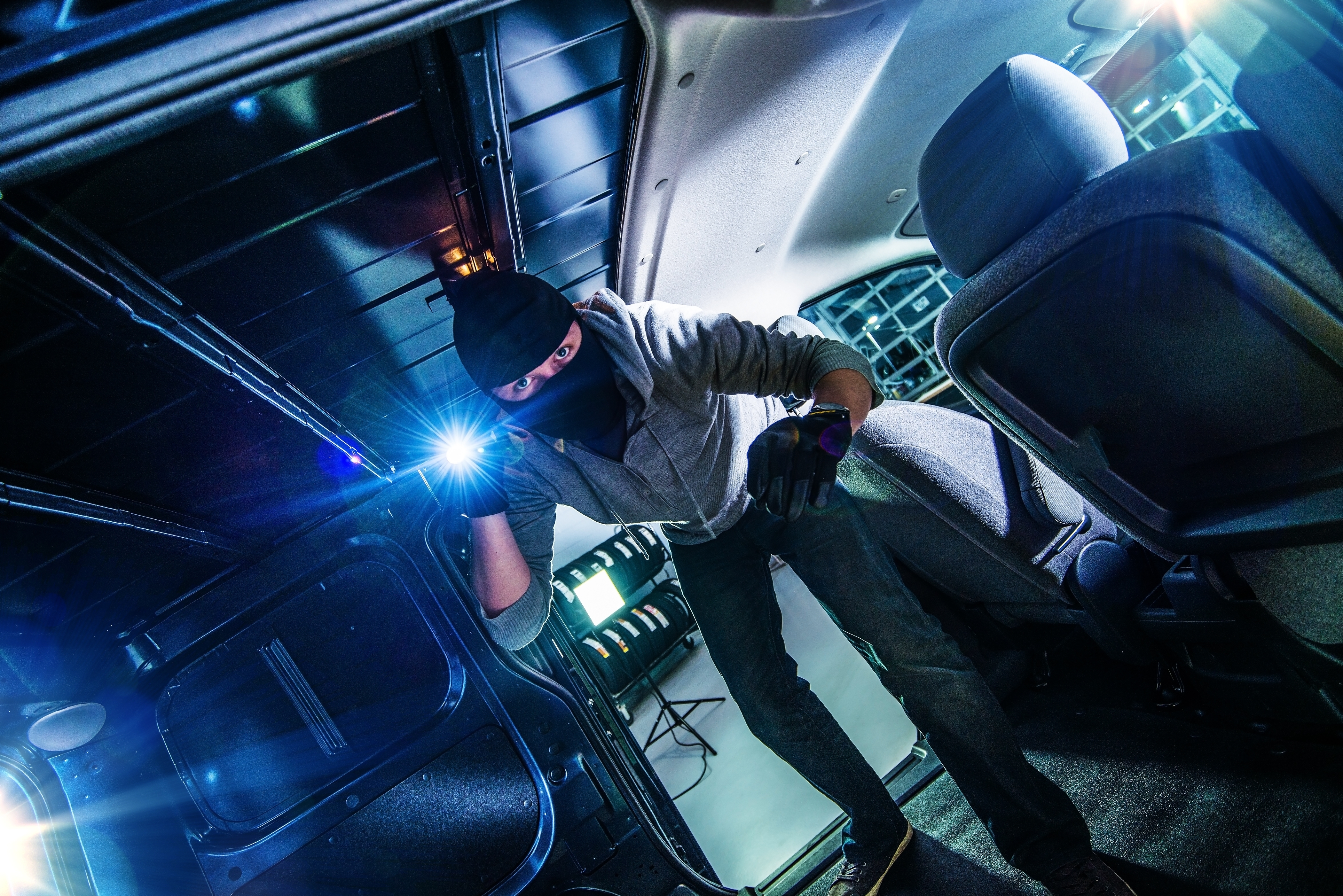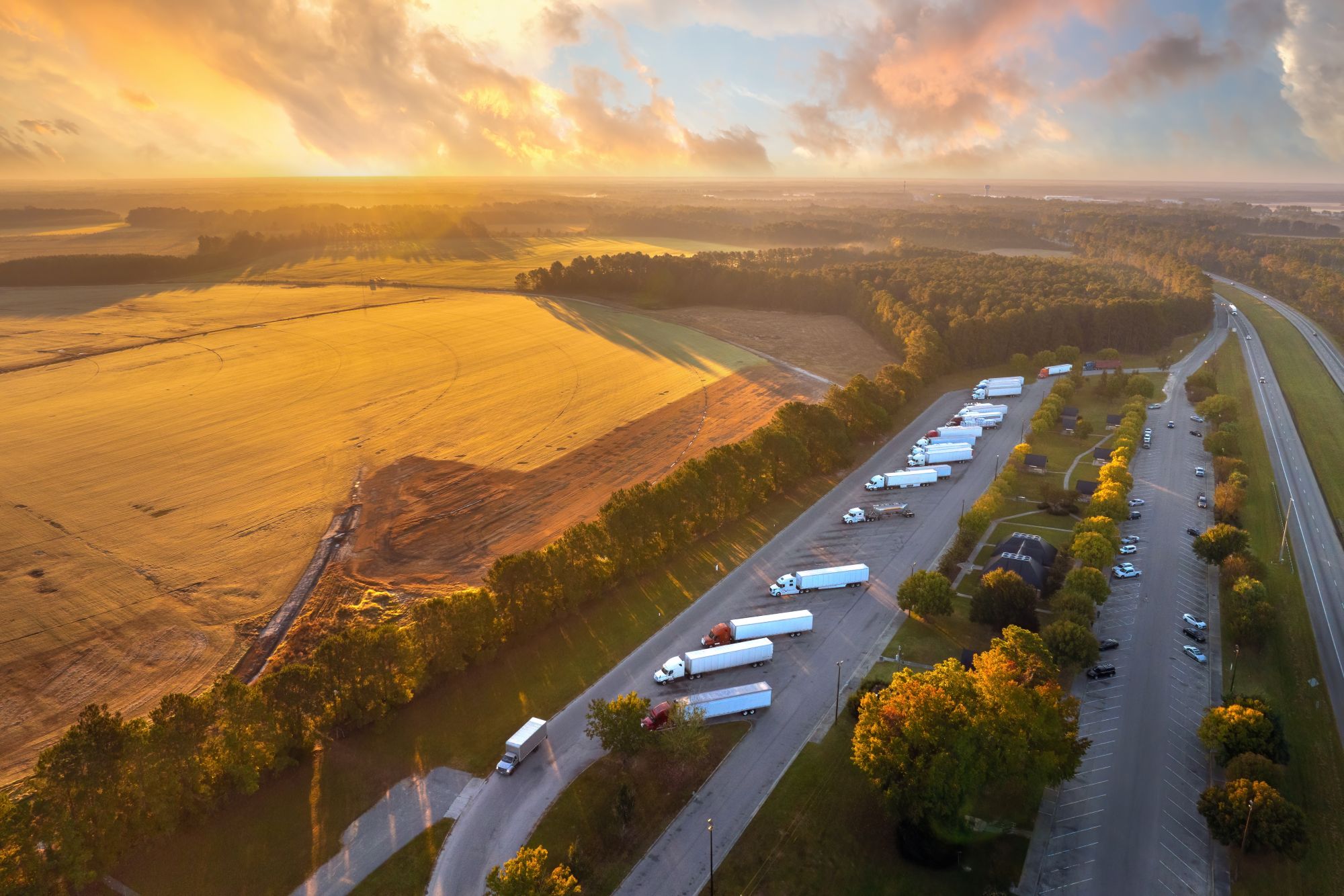
Miranda Blake
Conselhos para manter o seu veículo seguro: Proteger o seu camião contra roubo
Criado: 14/11/2024
•
Atualizado: 14/11/2024
As empresas de transportes no Reino Unido e na Europa podem reduzir significativamente o risco de roubo de veículos e de carga. A proteção do camião não se resume à segurança do próprio veículo; envolve uma abordagem holística que inclui tecnologia, formação, envolvimento da comunidade e planeamento proactivo. Com as medidas certas, os gestores de frotas podem garantir a segurança dos condutores e a integridade dos bens, promovendo um ambiente seguro para as suas operações.
O que os condutores devem fazer
Fixação do veículo
Reforce a segurança do seu veículo utilizando vários dispositivos, tais como cadeados, selos com números únicos e cordões de inclinação. Estes devem ser aplicados imediatamente após o carregamento para criar uma camada adicional de proteção contra o acesso não autorizado.
É essencial efetuar controlos minuciosos. Depois de cada paragem, pare um momento para inspecionar o seu camião e a sua carga. Procure quaisquer sinais de adulteração ou atividade suspeita. A vigilância é fundamental para evitar incidentes de roubo.
Documentação
Manter uma lista de controlo exaustiva da segurança dos veículos. Esta deve estar prontamente disponível para ser analisada pelos agentes da Força de Fronteira ou por outras autoridades, sempre que necessário. Isto não só demonstra o seu empenhamento, como também ajuda no processo de investigação em caso de roubo.
Locais seguros
Opte por lugares de estacionamento bem iluminados e movimentados. As áreas com muito tráfego pedonal e câmaras de vigilância são menos apelativas para os ladrões. Sempre que possível, utilize áreas de estacionamento seguras designadas, equipadas com vedações perimetrais e sistemas de vigilância avançados ou pessoal de segurança. Estes locais proporcionam uma camada adicional de segurança. Para o estacionamento noturno, escolha locais iluminados e vigiados.
Encontre estacionamento seguro para camiões no seu percurso de trânsito utilizando o [mapa SNAP] (https://snapacc.com/map/).

Tecnologia e equipamento
A incorporação de tecnologia avançada pode reforçar significativamente a segurança do seu veículo. Equipe o seu camião com sistemas modernos, incluindo localização por GPS, imobilizadores e alarmes de pânico. Estes sistemas não só impedem o roubo, como também ajudam na recuperação em caso de incidente.
Planeamento de rotas
Além disso, planear eficazmente as suas viagens pode ajudá-lo a evitar áreas de alto risco. Utilize um software que lhe permita mapear as rotas de entrega, evitando os pontos críticos conhecidos de roubo de carga. Ao implementar a telemática e a tecnologia GPS para monitorizar o seu veículo em tempo real, poderá seguir a sua localização e garantir o cumprimento das viagens planeadas.
O que os operadores de frotas devem fazer
Protocolos e sistemas de segurança
Um conjunto bem definido de protocolos de segurança é essencial para todos os condutores. Enquanto operador de frota, pode fornecer diretrizes escritas abrangentes que descrevam pormenorizadamente as medidas de segurança que devem ser seguidas. Esta abordagem garante que todos estão na mesma página no que respeita às práticas de segurança.
Os condutores devem receber formação sobre a utilização eficaz dos sistemas instalados nos seus camiões. A familiaridade com estes dispositivos pode aumentar a sua eficácia. É também uma boa ideia informá-los sobre as potenciais ameaças e a importância da vigilância. Devem conhecer as tácticas comuns utilizadas pelos ladrões e saber como reagir de forma adequada.
Manter os seus camiões em óptimas condições reduz o risco de avarias que podem levar a roubos. Implemente um programa de manutenção proactivo para garantir que os seus veículos estão sempre em boas condições de funcionamento. As verificações regulares podem evitar falhas mecânicas que podem deixar os seus camiões vulneráveis.
Comunicação e comunidade
O estabelecimento de canais de comunicação claros é vital para uma gestão eficaz da segurança. Manter uma comunicação aberta entre condutores, expedidores e pessoal de segurança. Isto permite a comunicação imediata de qualquer atividade suspeita ou problema com o veículo. Encoraje os condutores a informarem-se periodicamente durante os seus turnos.
O envolvimento com a comunidade local pode melhorar as suas medidas de segurança. Colabore com outras empresas e com as forças policiais locais para partilhar informações sobre potenciais ameaças. Uma abordagem colectiva pode aumentar a sensibilização e conduzir a estratégias de prevenção da criminalidade mais eficazes. Participe em iniciativas comunitárias que se centrem neste aspeto - a construção de relações pode criar uma rede de apoio que ajuda a proteger os seus bens.
Planos de resposta
A existência de um plano sólido para emergências pode atenuar os efeitos do roubo. Desenvolva protocolos claros para responder a incidentes. Deve incluir passos para comunicar o incidente, contactar a polícia e notificar a sua seguradora. Certifique-se de que todos os condutores estão familiarizados com estes protocolos - devem saber como atuar de forma rápida e eficaz.
Consciência situacional
Formar os condutores para estarem atentos ao que os rodeia pode evitar roubos. Ensine-os a identificar actividades suspeitas nas imediações dos seus veículos e incentive-os a confiar nos seus instintos e a comunicar quaisquer ocorrências invulgares. Além disso, sublinhe a importância de dar prioridade à segurança pessoal em detrimento da carga. Se forem confrontados por um ladrão, devem obedecer e comunicar o incidente às autoridades logo que seja seguro fazê-lo.
Monitorização das transacções de combustível com o SNAP
Fornecemos um sistema de pagamento inteligente que regista e acompanha automaticamente as transacções de combustível. Quando os condutores abastecem os seus veículos em qualquer um dos mais de 3.500 locais em todo o Reino Unido, basta apresentar o seu cartão SNAP Fuel para pagar a transação, o que elimina a necessidade de dinheiro ou cartões de crédito, simplificando o processo.
O sistema adiciona automaticamente cada transação de combustível à conta associada ao número da matrícula do veículo. Esta automatização elimina a necessidade de os condutores recolherem e apresentarem manualmente os recibos, reduzindo a carga administrativa e a possibilidade de erros.
Os gestores de frotas recebem mensalmente facturas detalhadas que fornecem uma visão geral pormenorizada da atividade de todos os seus veículos, o que permite uma fácil monitorização do consumo de combustível e das despesas de toda a frota.
O SNAP Fuel integra-se com outros serviços da SNAP Account, permitindo aos gestores de frota monitorizar não só as transacções de combustível, mas também os serviços de estacionamento e lavagem numa única conta, proporcionando uma visão abrangente das operações e despesas. Saiba mais sobre o SNAP Fuel aqui.



